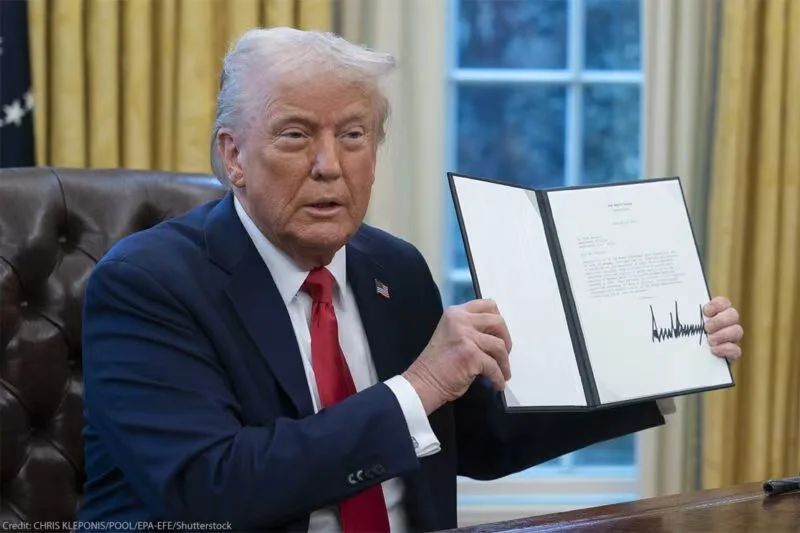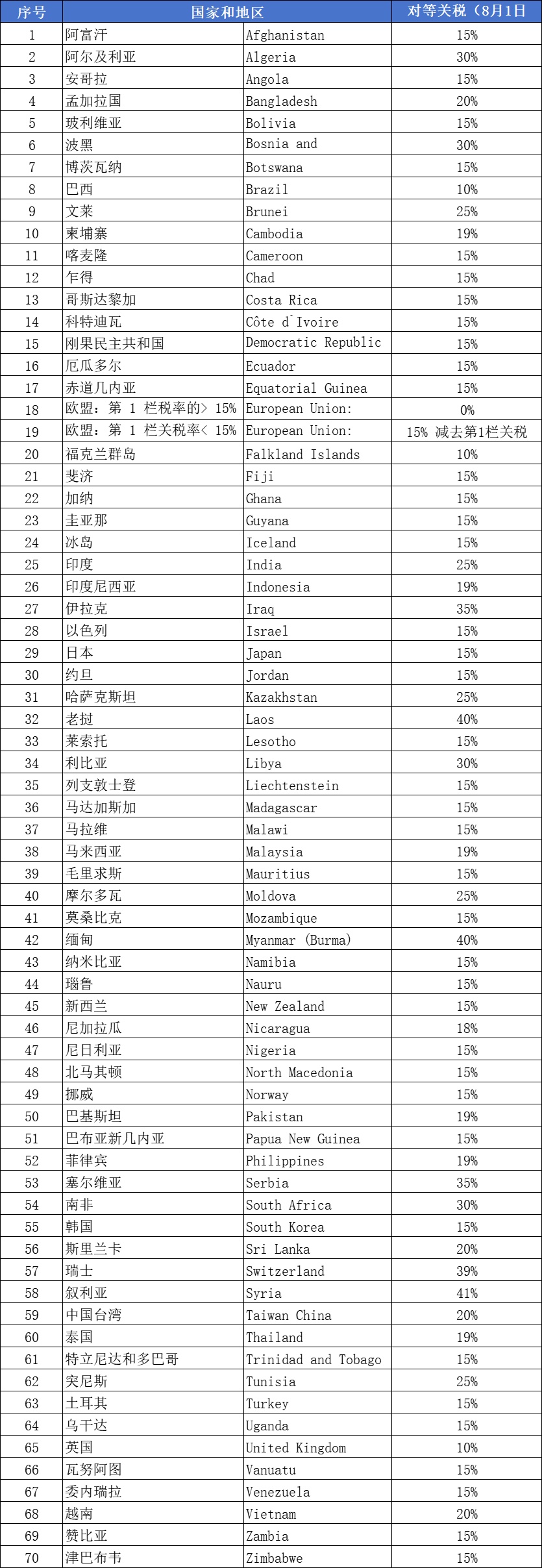Trump Signs Order! New "Reciprocal Tariffs" Range From 10% to 41%—Plastic Futures Slump, POM Rises

On July 31 local time, the White House website announced that U.S. President Trump signed an executive order establishing the latest "reciprocal tariff" rates for nearly 70 countries and regions, with specific rates ranging from 10% to 41%. Specific details are as follows:

According to Annex I, a 15% tariff is applied to countries such as Japan, South Korea, and New Zealand. A uniform tariff of 10% is applied to goods from countries not listed in Annex I. The executive order also stipulates that if goods are found to be rerouted through a third country to evade tariffs, a 40% rerouting tax will be imposed, and the entities will be added to an "evasion list" which is published biannually.
According to the administrative order, the highest "reciprocal tariff" rate is imposed on Syria at 41%, Myanmar and Laos at 40%; Brazil and the United Kingdom have the lowest tariff rates at 10%. The tariff rates for most countries and regions are set at 15%. The tariff rate for Vietnam is set at 20%.
The new tariffs will take effect in 7 days, officially coming into force on August 7th.This move is also to provide countries that have not reached a trade agreement with time to negotiate, so that U.S. Customs has enough time to make the necessary changes to collect the new tariffs.
Tariff Exemption: Goods that have been shipped before 00:01 AM Eastern Time on August 7, 2025, and are in their final mode of transport, and arrive in the United States by October 5, 2025, for consumption or withdrawal from warehouse for consumption, will not be subject to the additional tariffs. This allows existing orders destined for the U.S. to be exempted, meaning that as long as the goods are shipped by August 7 and arrive at a U.S. port before October 5, they qualify for the tariff exemption. The previously implemented additional tariffs (10%, excluding China) still apply.
EU Tariffs: If the tariff rate in the first column for an EU product is less than 15%, then the reciprocal tariff for that product is 15% minus the tariff in the first column. If the tariff rate in the first column for an EU product is already equal to or greater than 15%, then the reciprocal tariff for that product is zero. This essentially ensures that EU products are not subject to a tariff lower than 15%. It is important to note that the EU reciprocal tariff does not stack with the most-favored-nation rate or any other additional imposed tariffs.
Canadian Tariffs: In addition, Trump stated that he will raise tariffs on Canada from 25% to 35%, effective August 1. The White House indicated that goods that comply with the United States-Mexico-Canada Agreement (USMCA) will not be affected by the higher rates.
Latest plastic prices on August 1st
In August, the commodity futures market broadly turned green, with coking coal falling more than 5%, PP, PE, and styrene slightly declining, and PVC and PTA dropping more than 1%.
Recently, driven by the "anti-involution" sentiment and infrastructure benefits such as the Yarlung Zangbo River power station project, PVC followed leading commodities like coking coal in a unilateral rise. Unfortunately, the good times didn't last long, as it fell back shortly after gaining momentum.
The final straw that broke the market—Wanhua's 400,000 tons/year PVC and other units resume production.Directly pushing suppliers to their maximum capacity, resulting in a drop in spot prices, with a more significant decline in some areas:
Hangzhou Sanlian WuxingA decrease of 160 yuan/ton
Hangzhou Yihua Five TypesDown 160 yuan/ton
Hangzhou Yili WuxingThe price dropped by 150 RMB/ton.
Hangzhou Jintai Type 5Down 150 yuan/ton
Changzhou Zhongtai Type 5Down 120 yuan per ton
Tianjin Yili Five TypesDown 110 yuan per ton
Shanghai Tianye Five TypesDown 100 yuan/ton
……
The plastic market has almost given back all its previous gains. Currently, downstream demand is weak, and the supply side remains under high pressure, making it difficult for there to be any significant increase in the short term.

【Copyright and Disclaimer】This article is the property of PlastMatch. For business cooperation, media interviews, article reprints, or suggestions, please call the PlastMatch customer service hotline at +86-18030158354 or via email at service@zhuansushijie.com. The information and data provided by PlastMatch are for reference only and do not constitute direct advice for client decision-making. Any decisions made by clients based on such information and data, and all resulting direct or indirect losses and legal consequences, shall be borne by the clients themselves and are unrelated to PlastMatch. Unauthorized reprinting is strictly prohibited.
Most Popular
-

List Released! Mexico Announces 50% Tariff On 1,371 China Product Categories
-

Nissan Cuts Production of New Leaf EV in Half Due to Battery Shortage
-

EU Changes ELV Regulation Again: Recycled Plastic Content Dispute and Exclusion of Bio-Based Plastics
-

Clariant Unveils Cost-Cutting Plan Details, Plans to Shut Down Multiple Plants
-

Mexico officially imposes tariffs on 1,400 chinese products, with rates up to 50%






